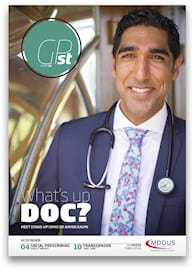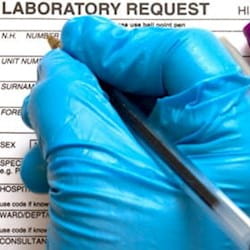ALONG with remote consultations, remote monitoring is part of a rapidly changing area of technology known as telemedicine. Telemedicine can be defined as the delivery of healthcare services, such as assessments or consultations, over the telecommunications infrastructure, allowing providers to evaluate, diagnose and treat patients without the need for an in-person visit.
Remote monitoring allows patients to be monitored in their own homes through the use of mobile medical devices that collect data. It’s much more than just recording blood sugar levels, blood pressure and other vital signs. Advances in IT, combined with growing patient demand, could trigger a revolution in remote health monitoring over the next few years.
Integration of IT in healthcare is a key strategy for all UK governments. This winter some CCGs set up care home pilots which allowed patients to be monitored remotely, reducing the need for GP visits. The pilots consisted of a combination of automated recording and flow of data back to the clinician, alongside manual recording by a remote carer, with an agreed protocol allowing information to flow back into the practice,
Remote monitoring can improve care by giving patients and carers greater involvement in managing their health and providing continuous tracking of their symptoms, so that interventions can be made before any problems become acute. Technology is becoming more user-friendly and unobtrusive to wear, allowing patients to continue with their normal activities. Increasingly, tracking software can be integrated into everyday devices, such as smartphones, tablets and now smartwatches, which should help to speed up adoption.
However, this new technology is not without risks and trainees – or indeed any clinician – should not use remote monitoring devices without proper training, understanding agreed protocols or having been directly involved in system setup.
A standard for the assessment and approval of safe healthcare apps (as with MHRA approval of healthcare devices) is currently being established, but in the meantime it is important for practice teams to conduct a comprehensive assessment before introducing new technology.
This should include carrying out a privacy impact assessment as required by data protection legislation. This is basically a risk assessment focusing on the potential impact of a data breach relating to the introduction and use of monitoring devices and software.
Clinicians will also have to set local standards for the use of remote monitoring by patients. These could be established through profiling different conditions. Patients will have to be aware that an alert might be triggered without their knowledge if the monitor is set up to send frequent daily readings.
Practice clinicians should be aware of the proper response to alerts and the escalation strategy for each particular patient. Systems should be set up within the practice to ensure that monitoring alerts are dealt with in a timely manner. Without appropriate attention to alerts, a practice might miss an opportunity to deal with an emerging issue and prevent a serious problem.
‘Alert fatigue’ could also become a risk if system triggers are not set properly, leading to alerts being ignored – which can be very tempting if they are frequent and of a low level. Alerts are necessary to avoid information overload at the point of contact with the practice, however it is important that they are set with care, and are specific to patient needs.
Doctors should be able to specify the alert trigger strategy for each patient so that they are aware of what is “normal” for that particular patient. It is also vitally important to agree how you will contact the patient to discuss issues for urgent follow-up. Additionally, the patient’s family may need to be made aware of what is arranged so that if the practice has to contact, say, a wife or husband, there is no potential for a breach of confidentiality. All such issues should be discussed with the patient and recorded in the case notes.
Monitoring information must be compatible with the clinical system so that information can be stored in the patient record and retrieved easily. Responses to all electronic and remote person alerts should be documented, with an audit process in place to ensure adequate monitoring procedures. Monitoring information should also be regularly reviewed with the patient to reinforce adherence to care and treatment plans.
ACTION POINTS
- The practice should undertake a privacy impact assessment before using a device.
- Specify and agree with each patient a “trigger strategy”.
- Ensure you and the practice team are aware of the proper responses to alerts and the agreed escalation protocol.
- Review monitoring information with the patients at regular practice visits.
- Document all responses to alerts in the clinical record.
Liz Price is senior risk adviser at MDDUS
This page was correct at the time of publication. Any guidance is intended as general guidance for members only. If you are a member and need specific advice relating to your own circumstances, please contact one of our advisers.
Read more from this issue of Insight Primary

Save this article
Save this article to a list of favourite articles which members can access in their account.
Save to library

